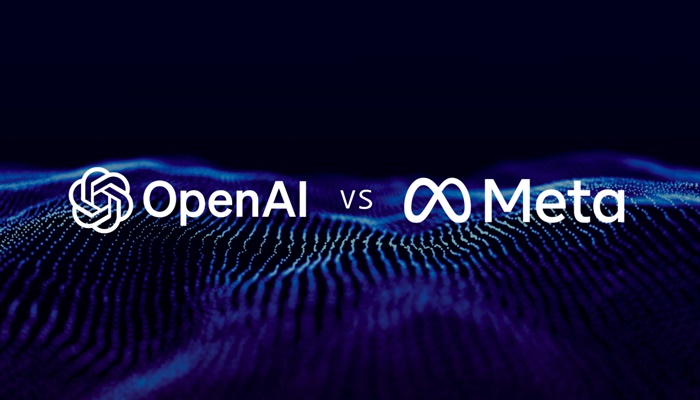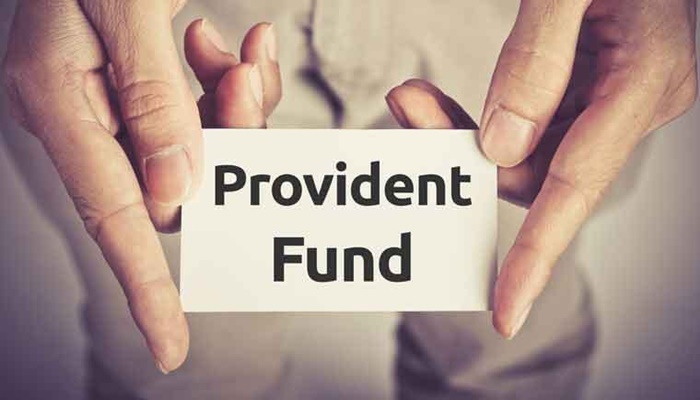In the intricate tapestry of financial planning, particularly for salaried individuals in India, the concept of a Provident Fund (PF) stands as a foundational pillar. More than just a deduction from one’s monthly pay slip, the PF represents a government-mandated retirement savings scheme, meticulously designed to imbue financial stability and security in the post-retirement years. Managed by the Employees’ Provident Fund Organisation (EPFO), this scheme, primarily known as the Employees’ Provident Fund (EPF), forms a critical component of every corporate employee’s long-term wealth accumulation strategy.
What is Provident Fund (PF) and EPF?
A Provident Fund (PF) is a compulsory savings instrument, primarily for salaried employees earning up to a certain income threshold. The most prevalent form of PF in India is the Employees’ Provident Fund (EPF). The Employees’ Provident Funds and Miscellaneous Provisions Act, 1952, mandates its operation, ensuring that a significant portion of an employee’s earnings, systematically channeling funds into a retirement corpus.
Contribution is straightforward and powerful. Both the employer and the employee contribute an equal percentage – 12% – of the employee’s “basic salary” (plus Dearness Allowance, if applicable) each month. This means that for every rupee an employee saves, their employer matches it, effectively doubling the monthly contribution towards their retirement nest egg. This consistent, dual contribution ensures a substantial accumulation over an individual’s working life.
What truly distinguishes the EPF as a robust long-term savings vehicle is the interest it accrues. EPFO declares an annual interest rate, which compounds on the accumulated balance. Historically, this interest rate has often remained competitive, offering returns that outpace many traditional savings instruments. Crucially, EPF enjoys an “Exempt, Exempt, Exempt” (EEE) status under India’s tax laws. This means that contributions qualify for tax deduction under Section 80C of the Income Tax Act, the interest earned remains exempt from tax, and the final withdrawal at maturity or retirement also incurs no tax liability. This triple tax benefit makes EPF an exceptionally attractive component of any tax-efficient financial portfolio.
Plus, employees have an option to increase their own contribution voluntarily through the Voluntary Provident Fund (VPF). While the employer’s contribution remains capped at 12%, an employee can choose to contribute more than 12% of their basic salary to VPF, up to 100%. VPF contributions also enjoy the same EEE tax benefits and high-interest rate, offering an excellent avenue for individuals seeking to accelerate their retirement savings beyond the mandatory limit. Both EPF and VPF serve the singular, overarching goal: to provide substantial financial stability and security for the employee after their retirement, safeguarding them against financial uncertainties in their non-earning years.
Your PF Passport: The Universal Account Number (UAN)
The advent of the Universal Account Number (UAN) has revolutionized the management of Provident Fund accounts, simplifying processes and enhancing portability for millions of employees. A UAN is a unique, 12-digit number that the EPFO allots to every employee. This singular number acts as an umbrella, linking all the different PF accounts an individual might accumulate throughout their working career, irrespective of how many jobs they switch.
The core benefit of UAN lies in its assurance of portability. When employees change jobs, a streamlined UAN simply gets linked to the new PF account, maintaining a consolidated record.
Employees must activate their UAN promptly upon joining their first formal employer. This typically involves visiting the EPFO unified portal (https://unifiedportal-mem.epfindia.gov.in) and following a simple activation process using their PF account number and mobile number. Once activated, the portal becomes a powerful tool for monitoring contributions, updating details, and initiating various PF services. Regularly updating the new employer’s details via this portal is crucial to ensure that contributions continue to flow into the correct, linked account. UAN has transformed PF management from a cumbersome, paper-heavy process into a largely digital, transparent, and employee-centric system, significantly reducing the administrative burden on both employees and employers.
Making the Most of Your PF
Proactive management of one’s Provident Fund can significantly enhance its effectiveness as a retirement savings instrument. Adopting a few key good practices ensures employees maximize its benefits and navigate potential pitfalls.
First, ensure regular contributions are reflected in your passbook. This seems basic, but it is fundamentally crucial. Employees must regularly check their EPF passbook (available online via the EPFO portal or Umang App) to verify that their and their employer’s contributions are credited correctly and on time. Any discrepancy or delay in contributions should immediately be brought to the employer’s HR or finance department. This safeguard against potential misappropriation by employers and ensures the continuous compounding of interest on the full entitled amount.
Second, and perhaps most critically for long-term wealth creation, avoid early withdrawals unless absolutely necessary. The power of compounding interest works best over extended periods. Frequent or premature withdrawals erode the corpus, significantly diminishing the final retirement amount. Moreover, withdrawals before five years of continuous service can attract tax implications, converting what was a tax-exempt saving into taxable income. PF serves as a retirement fund; treating it as an emergency fund or a short-term savings account defeats its primary purpose and compromises long-term financial security.
Third, if you have a family emergency, consider reinvesting the withdrawn amounts into other retirement schemes. If circumstances force a partial or full withdrawal (within permissible limits), employees should explore avenues like the National Pension System (NPS) or various mutual fund schemes (equity or debt, depending on risk appetite). This strategic reinvestment helps maintain a long-term savings discipline, ensuring that the capital continues to work towards retirement goals. Consulting a financial advisor can provide tailored guidance on the best reinvestment options.
Fourth, nominate a beneficiary. This is a critical yet often overlooked practice. Nominating a beneficiary (or multiple beneficiaries) ensures that in the unfortunate event of the employee’s demise, the accumulated PF corpus seamlessly transfers to their designated family members without legal complications or delays. EPFO provides an e-nomination facility through its portal, making the process straightforward and accessible. Regularly reviewing and updating the nomination in case of life events like marriage, divorce, or the birth of a child is also a wise practice.
And finally, link UAN with Aadhaar, PAN, and bank account for smooth transactions. A fully KYC-compliant UAN ensures that when the time comes for withdrawal, the process is streamlined, digital, and avoids unnecessary delays or complications. These linkages simplify everything from checking balances to filing claims and transferring funds between accounts.
Understanding Withdrawal Rules and Loans
While PF primarily functions as a retirement savings vehicle, the EPFO framework incorporates flexibility, allowing for withdrawals and advances under specific, defined conditions. Understanding these rules is vital for employees to responsibly access their funds when genuine needs arise.
Partial Withdrawal: EPFO permits partial withdrawals from the EPF corpus for specific life events, recognizing that employees may face significant financial demands before retirement. These conditions include:
- Marriage: For the marriage of self, children, or siblings.
- Education: For the higher education of self or children.
- Home Purchase/Construction/Repayment of Home Loan: To buy land or a house, construct a house, or repay an existing home loan.
- Medical Emergencies: For the treatment of serious illnesses affecting the employee, spouse, children, or parents.
- Renovation/Alteration of House: For significant repairs or alterations to an existing house.
- Pre-retirement withdrawal: After attaining 54 years of age.
Employees should consult the EPFO website or their HR department for precise details for each condition. It is crucial to remember that these are partial withdrawals and do not close the EPF account.
Full Withdrawal: Full withdrawal of the entire EPF corpus is permissible only under stringent conditions, reinforcing its role as a long-term retirement fund. The primary conditions for full withdrawal are:
- Retirement: Upon attaining the age of 58 years.
- Two Months of Continuous Unemployment: If an employee faces unemployment for a continuous period of two months or more. In this scenario, the employee must declare their unemployment status to the EPFO.
While full withdrawal implies the closure of the EPF account, it is typically tax-exempt if the employee has completed at least five years of continuous service. If withdrawn before this period (and not due to specific conditions like illness), the withdrawal amount can become taxable.
A unique feature of the EPF scheme is the provision for a “loan” against the PF, which is technically a non-refundable advance. Unlike traditional loans, these advances carry no interest and have no repayment clause, as the amount simply gets deducted from the employee’s own accumulated corpus. Employees can take these advances under certain conditions, similar to partial withdrawals, such as:
- Housing: For the purchase of a house or land.
- Illness: For medical treatment.
- Marriage or Education: For the marriage of children or higher education.
- Natural Calamities: In cases of floods, earthquakes, etc.
This is a lifeline, enabling individuals to address immediate financial exigencies using their retirement savings without jeopardizing the entire corpus through permanent withdrawals.
Bad Practices and Their Consequences
While the EPF offers significant benefits, certain “bad practices” can undermine its purpose and lead to financial complications for employees.
First, each time an employee makes a partial withdrawal, they deplete their corpus, reducing the power of compounding. Over time, multiple small withdrawals can severely impact the final retirement amount, leaving a much smaller sum than originally projected. Beyond the financial loss, frequent withdrawals can also incur tax liabilities if the continuous service period criteria are not met, turning a tax-efficient saving into a tax burden.
Second, neglecting to update KYC details or failing to transfer PF accounts between jobs can render an account “dormant” after a certain period of inactivity (typically 36 months of no contributions). While dormant accounts still earn interest for a few years, activating them or settling claims can become a prolonged and frustrating process, often requiring extensive documentation and follow-up. Proactive reconciliation and updating prevent these future headaches.
Finally, neglecting UAN activation or linking all PF accounts causes unnecessary complications. A new job without updating the UAN with the new employer can lead to a new PF account opening under a different UAN, making it difficult to track total contributions, check consolidated balances, and process transfers when needed. It effectively defeats the purpose of UAN’s portability and transparency.
Employees’ Provident Funds and Miscellaneous Provisions Act, 1952
The Employees’ Provident Funds and Miscellaneous Provisions Act, 1952, forms the robust legal backbone that governs the entire EPF scheme. This Act outlines the obligations of employers and provides a clear framework for employees to seek redressal in cases of non-compliance or misconduct.
The Act places strict responsibilities on employers. It mandates them to:
- Register with EPFO: All eligible establishments must register with EPFO.
- Deduct Contributions: Deduct the employee’s share of EPF contribution from their salary.
- Remit Contributions: Timely remit both employee and employer’s shares to the EPFO, along with administrative charges. This typically happens by the 15th of the following month.
- Maintain Records: Accurately maintain all PF related records for their employees.
Any default or misappropriation of PF contributions by employers constitutes a serious offense under the Act. It views non-remittance of PF contributions, which are essentially employee savings, as a breach of trust and a criminal offense, not just a civil one.
For employees facing such issues, the legal framework provides clear avenues for grievance redressal:
- EPFiGMS (EPFO Grievance Management System): This online portal serves as the primary and most accessible channel for employees to file complaints against their employers. Whether the issue involves non-deposit of contributions, delayed deposits, incorrect calculations, or any other PF-related grievance, employees can register their complaint on this system. EPFO then investigates the matter and initiates action against the defaulting employer. This digital platform has significantly empowered employees by providing a transparent and trackable mechanism for complaint resolution.
- Approaching Labour Courts/Industrial Tribunals: If the internal mechanisms or EPFiGMS fail to resolve the issue, or in cases of severe and persistent default or misappropriation, employees can escalate their grievances to the Labour Courts or Industrial Tribunals. These judicial bodies have the authority to hear disputes related to employment and labor laws, including PF-related matters.
- Criminal Penalties: The Act also prescribes criminal penalties for employers who default on PF contributions. In severe cases of persistent non-compliance or willful misappropriation, employers can face imprisonment and significant fines.
This comprehensive legal framework ensures that while PF serves as a powerful savings tool, it also provides employees with the necessary legal protection and recourse, holding employers accountable for their statutory obligations.
The Provident Fund, particularly the Employees’ Provident Fund (EPF), is a vital, government-mandated retirement savings scheme, systematically building a substantial corpus through consistent contributions from both employer and employee, all while enjoying attractive tax benefits and compounding interest.
In an economic landscape characterized by rapid change, the Provident Fund provides a bedrock of stability. By actively managing their PF, employees not only secure their own financial future but also contribute to a broader culture of financial discipline and trust in the workplace. It remains a must-know, must-manage asset for every corporate employee aiming for a financially secure post-retirement life in India.

















